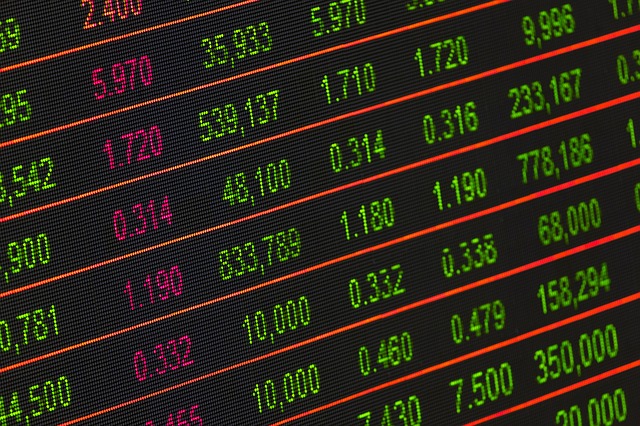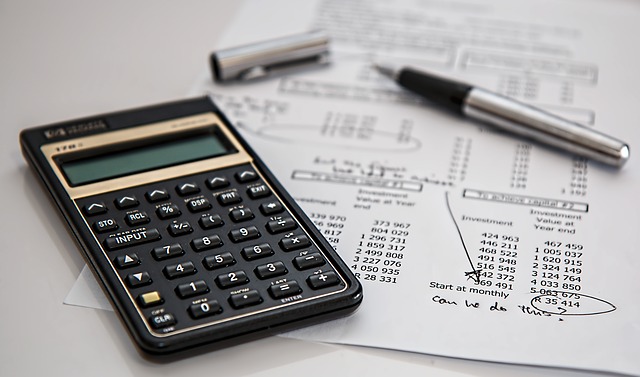Top Blue Chip Stocks, Dividend Stocks and more
View a list of top stocks on NASDAQ and NYSE
Stock Forecasts, Price Charts, Annual Reports and More
Stock Forecasts, Technical Analysis, Price Charts and More
Best Stocks Under $100
More Stock Tools
Hottest Stocks Right Now
Gap up stocks are stocks with prices that open higher than the previous day’s closing price. For example, Company A is a gap up stock if it closes at $500 on Monday and opens at $510 on Tuesday.
Before buying gap up stocks, you should take some time to learn about gap up patterns, why stocks open gap up, and popular ways other people earn money from gap up stocks. With some research and experience, you might find that you can make gap up stocks an important part of your investment portfolio.
What Is a Gap Up Pattern?
Gap up patterns show that a stock’s price has increased from the previous day’s closing value to the current day’s opening value.More often than not, you wouldn’t pay attention to tiny gaps that only add a few cents to a stock’s price. You would, however, want to pay close attention to a stock with a gap up pattern showing an increase of several dollars. The noteworthy change in price could indicate that something important happened outside of the usual trading hours.
You should note that gap down patterns happen, too. Gap down stocks are essentially the opposite of gap up socks. With a gap down pattern, today’s opening price is lower than the previous day’s closing price. Many investors look for gap down patterns so they can purchase stock at reduced prices.
Why Do Stocks Open Gap Up?
Stocks open gap up because something has excited investors outside of the trading market’s operating hours. That’s a very general definition because a broad range of events can excite investors and push stock prices up.Some specific reasons that stocks open gap up include:
- Earnings reports that show the company generated more profit than expected over a quarter.
- Press releases introducing new products or services that fill a need within a company’s industry.
- Increased buys on foreign markets that operate while U.S. exchanges are closed.
- Good news that indicates a company may have avoided a potential challenge, such as overcoming a supply chain obstacle or winning or a lawsuit.
The opposite is also true. When earnings are down, foreign investors lose interest, or a company is negatively affected by a challenge, the stock can open gap down.
What Happens When a Stock Gaps Up?
Several things can happen when a stock gaps up. Common results include:- The price continues to move upward throughout the day.
- The stock experiences a correction and the price goes down.
- The stock’s price changes erratically as the market tries to find the correct value.
Gap Up Stocks Continue Gaining Value
Gap up stocks continue gaining value when investors believe that the company still has room to grow.The event that energized investors during off-market hours doesn’t go away when the U.S. exchanges open. Instead, U.S. investors agree that the company’s shares were priced too low the previous day.
They don’t want to miss an opportunity to earn money from a successful company, so they buy more shares. By purchasing more shares, they push the price up.
At some point, a gap up stock will slow its ascent, plateau or start to fall. It’s highly unlikely that the price will keep increasing for an extended period at the same pace at which it gapped up.
Even if the company continues growing, investors in the market will eventually start to question whether it makes sense for them to spend such a high price for new shares. When that happens, the value will remain steady or begin to fall.
When investors buy gap up stocks, they hope that the prices will continue their upward trajectories. For that to happen, the company needs to maintain enthusiasm for its future.
They can do that by continuing to earn high profits, developing new products and services that appeal to buyers, and streamlining their processes to lower overhead costs. For example, when Tesla (TSLA) innovated new car models, the stock soared.
Gap Up Stocks Start Losing Value
Gap up stocks can experience corrections at any point. If the stock is overvalued, traders on the U.S. exchanges will not buy shares. The lack of interest will force the price down.The drop in value could happen within minutes of the exchange opening. If investors believe that overseas buyers were overly enthusiastic, the value can tumble quickly.
Assuming that a gap up stock loses value, it usually happens slowly over one or several days. The enthusiasm that early buyers felt may start to fade as they reconsider the event that encouraged them to buy shares.
Many short-term investors make quick decisions to ensure they can buy stocks at the lowest prices. Seeing an unexpectedly high earnings report could excite an investor, who then purchases 100 shares in the company. The next day, the earnings may not seem as optimistic as they did initially.
For example, when Berkshire Hathaway bought shares of IBM (IBM), they initially popped in price as followers of Warren Buffett jumped on board but over time the S&P 500 rose significantly while IBM failed to gain traction - and ultimately Berkshire concluded it too made a mistake and sold its IBM shares.
If people who own shares start to worry that they made mistakes, they could start to sell their shares. When this happens, the stock’s value will fall. The falling price could make other people reconsider whether they should have purchased their shares. If they respond by selling, the price will keep falling.
Gap Up Stock Prices Change Erratically
Obviously, no one wants to make a bad decision when investing in a gap up stock. Optimism and fear can tug against each other to make the stock’s price change erratically throughout the day. The value could experience huge swings or skip up and down by a few dollars.There is no way to guarantee what will happen to a gap up stock with prices that change frequently. Investors may receive more information that helps them feel confident in buying shares. When that happens, the price will either increase or remain steady. Negative information – or no information – could prompt more people to sell, which will make the price fall.
It’s important to note that falling prices aren’t always a bad thing, especially when stocks behave erratically. Day traders could use the fluctuations to make money. When the price dips, they can purchase shares, wait for the price to go back up, and sell for a profit.
Long-term investment strategies almost always benefit people more than short-term strategies. A carefully placed bet could generate a quick profit for day traders, though.
Is a Gap Up Stock a Good Investment?
Plenty of people trade gap up stocks as successful investments. When a stop opens with a higher price than it had at the previous day’s closing, you know that something has pushed its value higher. Just by looking at the numbers, you can determine that something positive happened after the U.S. exchanges closed.Remember that nothing can guarantee the success of a stock. The price could tumble without any warning. Buying shares before you research the company and the underlying reason behind the gap up is very risky.
Before you decide to purchase gap up stock, spend some time researching the company and reading opinions written by professional investors. Indications that you might want to buy the stock include:
- Overwhelmingly positive reviews from investors.
- Reports showing that the company significantly outperformed expectations.
- News that the company has an industry-changing service or product.
- A price that keeps increasing throughout the day.
The stock will become more appealing as its price increases over the day. That’s good news that might suggest you should buy it. The longer you wait, though, the more money you could potentially spend on your shares.
Plus, the value will eventually reach a peak, at which point it will either plateau, decrease, or change erratically as the market settles on a fair price.
The short answer is that gap up stocks can be good investments, but you must consider the risk involved and purchase your shares before they become too expensive.
How To Find Gap Up Stocks
With thousands of stocks trading in the U.S., you cannot possibly know every gap up stock without using technology.A gap up stock screener will help you to identify gap up stocks and gather the basic information you need to start deciding whether you want to purchase shares.
Ideally, you want to use a gap up stock screener that tells you:
- The company’s name and stock ticket symbol.
- The stock’s gap up percentage.
- The last price of a single share.
- The current price of a single share.
- The stock’s daily volume.
- The stock’s market cap
- A stock score that helps identify the company’s overall health and chances of success.
Gap Up Patterns (Partial Gaps and Full Gaps)
Gap up patterns fall into two major categories: partial gaps and full gaps.Partial Gap Up Pattern
Partial gaps occur when the opening price is higher than the previous trading day’s closing price. The opening price is not, however, higher than the previous day’s highest price for the stock. For example, you have a partial gap up when:- Company A’s stock price reached $515 on Tuesday afternoon.
- Company A’s stock price was $500 when the exchange closed on Tuesday evening.
- Company A’s stock price was $510 when the exchange opened on Wednesday morning.
Full Gap Up Pattern
A full gap up pattern occurs when the day’s opening stock price is higher than the previous day’s stock price at every point. For example, you have a full gap up pattern when:- Company A’s stock price reached $510, it’s highest of the day, on Tuesday afternoon.
- Company A’s stock price was $500 when the exchange closed on Tuesday evening.
- Company A’s stock price was $515 when the exchange opened on Wednesday morning.
How Do You Trade Gap Up Stocks?
You play gap up stocks by hoping you can purchase shares before their prices get too high.When the exchange opens, many investors will see that a stock’s price has increased overnight. This can lead to a buying frenzy that makes the shares more valuable.
If you buy early enough, you can watch your shares accumulate value. Later, you can decide to sell them for a quick profit or hold on to them as long-term investments.
When the gap occurs in a big name stock like Microsoft (MSFT) you might be more willing to hold longer term than if a penny stock gaps higher on speculation that may lead to short term enthusiasm.
Will Gap Stocks Go Down?
Eventually, you can expect gap stocks to go down. That doesn’t necessarily mean that they will fall below earlier prices, though. It’s possible that a gap up stock will open at $500, move to $600 over the next few weeks, and then come down to a low of $550, where it fails to breach – give or take a few dollars – for the next several months or years.Occasionally, gap up stocks do not go down, at least not for several months or years. Still, you should expect share prices to plateau. Perhaps the value will reach $600 and stay in that region for the next few quarters.
It’s almost impossible for a stock to keep gaining value. For that to happen, the company would need to grow quarter after quarter without experiencing any hiccups in manufacturing, service, leadership, or supply chains. Few companies achieve such a feat but Amazon (AMZN) has historically been one such example.
Company A’s price might reach an unbelievable height of $5,000. At some point, though, it has to stop moving up. It’s not completely impossible for a stock price to stop appreciating in value, but such an occurrence would defy the understanding of modern economics.
What Does It Mean to Fill the Gap?
A stock “fills the gap” when it returns to the previous day’s price. For example, Company A’s stock fills the gap when it closes at $500 on Monday, opens at $600 on Tuesday, and falls to $500 before the end of the day, it has filled the gap.Filling the gap isn’t always a straightforward process. The stock’s price could change rapidly throughout the day before falling to the previous day’s price. It could also drop below the previous day’s ending price. Regardless, traders would consider that filling the gap.
Many experts point out that gap stocks almost always fill the gap because they rarely have real-world support driving their prices.
Irrational exuberance, for instance, can make a company’s stock price increase for something as meaningful as hiring a new CEO with some industry experience.
Will the new CEO improve the company? Perhaps, but investors have little evidence to know how the new person will affect the company’s performance. The high of making a decision drives the price up rather than concrete numbers.
Unless the company provides a plan toward improved efficiency, new products, and higher profits, its stock price will usually return to that of the previous day. It's rare that the new CEO has the Elon Musk level of buzz to sustain a share price elevation for years on end.
Do Stocks Always Fill Gaps?
Absolutely not. Plenty of stocks never fill gaps. They can avoid filling the gap by maintaining prices higher than the previous day’s closing price. Most investors consider this a positive thing because they want their stocks to gain value over time.The idea of whether a stock will fill the gap isn’t always as important as you might think. Investors who focus on filling the gap tend to make short-term bets on market behavior. More often than not, investors get better results by investing in companies that they believe will grow over the long-term.
The stock’s value might fall below the original purchase price at some point, but a healthy company should rebound and regain its lost value. In return, investors might earn money from dividends that they can reinvest or use to pay for their lifestyles.
It’s important to remember that falling stock prices can create opportunities for investors. Many day traders like gap down stocks because they can buy shares at discounted prices, wait for the shares to recover their value, and then sell their shares for profits. It’s a risky move, but it can pay off.
Obviously, that strategy doesn’t work for gap up stocks. Instead, you purchase the gap up stocks and hope that the momentum will carry share prices higher. If that doesn’t happen, then you might not make money. If you notice the price fall, though, you can sell your shares to avoid losing money.
Conclusion
Gap up stocks could represent opportunities to earn money from the stock market. Investors should always remember that there are no guarantees, though. Even the most carefully planned and executed trade could backfire. For that reason, you should not invest money that you cannot afford to lose. As long as you recognize the risk of losing money, you can enjoy exploring investment opportunities through gap stocks.You should also take some time to learn about the benefits of gap down stocks. Day traders find gap down stocks particularly appealing because they can generate quick profits by purchasing shares at discounted prices and selling them within a few hours when the prices normalize.
Weigh the pros and cons of stock gap up and stock gap down investment moves. It’s unlikely that they will play the central role in your investment portfolio, but they can help you discover ways to increase wealth quickly or purchase valuable shares at low prices.
Investing News

Is Splunk’s Rally a Glimmer of Hope or a Mirage?
Adrenaline junkies of the investing world, brace yourselves! Splunk (NASDAQ:SPLK), the company that once led the frontier of searchable unstructured business data, is back in the spotlight. A long-ignored wallflower in the dance of cloud analytics, Splunk is now drawing attention with its recent stock rally. The company’s free cash flow has solidified and GAAP […]

5 Stocks To Buy During Hurricane Season
Labor Day marks the unofficial end of summer. Schools reopen, leaves start to change color, and consumers begin looking towards autumn holidays. However, that’s not the only event associated with early September. The hurricane season peaks around Labor Day, and historically, there have been devastating storms all the way through September and well into October. […]

Will Moderna Stock Recover?
The global impacts of COVID-19 are finally easing. But in spite of the damage the pandemic inflicted on the economy at large, some companies directly benefited from COVID. Moderna (NYSE: MRNA) was one of those companies, and after the launch of its high-profile mRNA vaccine, the company’s revenue (and its stock) skyrocketed. Once trading at $18.60 […]

How To Buy Starlink Stock
Internet access is no longer a luxury. It’s a necessity for everything from healthcare to education. In developed countries like the United States, Canada, and most of Europe, it’s easy to get online. The equipment and infrastructure required for reasonably fast, reliable internet is in place throughout populated areas. In some cases, it’s even possible […]

VOOG Vs VOO: Which S&P 500 ETF Is Best?
Whether you’re new to investing or a long-time trader, having S&P 500 funds is almost a given in a well-rounded portfolio. But which S&P 500 ETF is best: VOO or VOOG? We take a look at two popular S&P 500 ETFs – VOOG and VOO to see what the differences between them are when it […]

Best AI Stock To Hold Long Term
Over the last few decades, no company has stood out as a bastion of growth and stability as much as the American tech corporation Microsoft (NASDAQ:MSFT). While its profitability and wide range of business interests have always made it a favorite among investors, the ongoing disruption in generative AI has positioned MSFT even more prominently […]
The #1 Stock Analysis Tool to Make Smarter Buy and Sell Decisions
Get started at Financhill, the #1 investment research platform that is your one-stop shop for finding the best trade ideas today.
-
Top Rated Stock Ideas
Financhill Stock Score is a proprietary stock rating engine that independently evaluates every company based on fundamental, technical, and sentiment criteria so you can find the highest rated stocks in the S&P 500, NASDAQ and NYSE. -
Best Stock Tools Platform
Whether you are looking for the best blue chip stocks, top dividend stocks, most shorted stocks, cheapest stocks today, highest dividend stocks or best stocks under $50, Financhill has got you covered and has so much more. -
Stocks Set To Soar & Crash
Financhill spots seasonal patterns in thousands of stocks so you can easily screen for the best stocks at this time of year. Want to know what stocks could rise 11% over the next 7 weeks with 91% accuracy based on past history? Our Seasonality Screener will surface the hottest stocks right now.